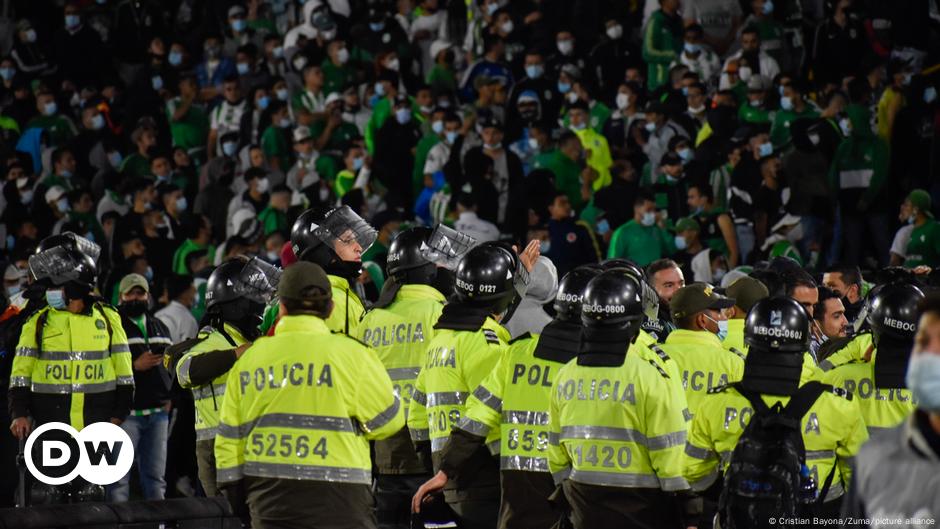Colombian football violence a reflection of society – DW – 05/12/2023
It is a football match that has electrified the Colombian metropolis of Medellin for decades. Emotions always run high around the local derby between Atletico Nacional and Independiente. Sometimes too high, as seen in late April, when scenes of violence broke out in and outside the stadium.
It was the latest in a series of clashes between rival fans in recent years. At the end of a bloody day, the police statistics recorded two lives lost, at least 14 injured. It’s a problem not just in Medellin, but in other Latin American cities where violent football fan groups have enough power to put pressure on the clubs.
Debate about violence in football
As a result, a debate has erupted in Colombia about how to tackle violence inside and outside stadiums. This problem is not exclusive to Medellin or even Colombia, but given its history, the rest of the world watches closely when blood is spilled in the Antioquia province.
That’s due to the murder of national team player Andres Escobar, who was shot dead in 1994 after returning to his hometown, having scored an own goal in Colombia’s World Cup match against the hosts, the United States.

Since then, Medellin has had the stigma of being one of the most dangerous football cities in the world. Yet the city actually deserves recognition for its dynamic rise to becoming one of the most exciting economic locations in South America as well as the “eternal spring” it enjoys thanks to its location on the globe.
Venue for social problems
“I think it’s a problem of society that spills over into football because society in a way permeates football,” said club President Mauricio Navarro of Atletico Nacional, one of the most popular clubs in Latin America.
Speaking to DW, Navarro compared the recent clashes with the political protests in recent years when the so-called “Primera Linea” took to the country’s streets.
“You saw then a similar violence that we saw in football, also in the streets,” he said.

Club Vice President Benjamin Romero believes deeply rooted intolerance has led to life having little value.
“On the street, someone is killed because their cell phone is stolen. If we apply this to football, in the street someone is killed because they’re wearing an opposing team’s jersey. It’s a completely absurd situation,” he said.
Apply existing laws as well
Both Atletico Nacional and Independiente are calling on politicians and the government to take a tougher stance in dealing with the perpetrators. They say it is necessary for the government to enforce the laws and for sentences to be carried out “so that there really is a consequence for violent acts in these scenarios, not only at football matches, but in all areas of social coexistence,” Independiente spokeswoman Paula Andrea Gonzalez told DW.
She added that it was not acceptable for a few to destroy the overall experience of predominantly peaceful fans.
“The only way to put an end to this is prison, prison for criminals and for those who are violent in football,” demanded Atletico Vice President Romero.
Clubs also have a duty
Both clubs point to their social activities and the dialog they conduct with the fan clubs and ultras. But there is also room for improvement, admitted Paula Andrea Gonzalez, referring to the behavior of players on the pitch.

“The club still has to bridge a gap between what happens at home, in their personal lives and their development in terms of personality.”
It is important, she said, during the 90 minutes of a match, not to give in to provocations amid the emotions.
“This is an issue that we can work on culturally with the teams and with the players,” she said.
The clubs themselves say they have a huge interest in seeing the situation improve, as violence in and around the stadium have a negative economic impact.
“There is a fear of going to the stadium, plus our stadiums are not as comfortable as those in the US or Europe,” Navarro admitted.
“We need to get back to how it was 30 years ago or earlier,” claimed Atletico Nacional Vice President Romero. Back then, he said, there were no violent fan groups. It was mainly families who came to the stadiums, and the atmosphere was much more peaceful and harmonious. But football, not only in Colombia, is currently a long way from that.
This article was translated from German
For all the latest Sports News Click Here

